
Ambient Air Quality Monitoring System
Air pollution is one of the most serious global and regional environmental problems. A major source of air pollution is industrial activities, including oil industries and power generation and vehicles. These pollution sources are associated with the emission of polluting gases such as carbon oxides, sulphur, nitrogen oxides, hydrocarbons, volatile compounds, as well as with the emission of particular matter and heavy metal elements. The Air Quality Monitoring systems that we provide enables the local authority to apply internationally approved standards in monitoring air pollution, to preserve the environment and public health from the effects of pollution sources emissions in a certain area, to take preventive measures to reduce the risks of this pollution. We are supplying gas analyzers that measure major organic and inorganic pollutants. In addition to this, we also provide a wide range of continuous real-time dust monitors and gravimetric samplers.Air pollution Monitoring System that we provide are designed to meet your requirement and budget.
Scope of supply:
- Certified Method Stations: NOx, NO, NO2, CH4, NMHC, THC,O3, SO2, H2S, CO, CO2, VOC, PM10, PM.25, heavy metals
- Compact certified Method Stations: NOx, NO, NO2, CH4, NMHC, THC,O3, SO2, H2S, CO, CO2, VOC, PM10, PM.25, heavy metals
- Dust sampler: low volume, high volume
Certified Method Stations:
HORIBA’s Ambient Air Pollution analyzers feature advanced technology, field-proven reliability with excellent sensitivity & precision at ppb level, and hassle free maintenance. Each ambient monitor differs in operating principle and can measure single/multiple components in ambient air or diluted stack gas.
Air Quality Monitoring System
AQMS, the doctor for “Human Health”
An Air Quality Monitoring Station (AQMS) is a system that measures metrological parameters such as wind speed, wind direction, rainfall, radiation, temperature, barometric pressure and ambient parameters. The AQMS also integrates a series of ambient analyzers to monitor the concentration of air pollutants (NOx, NO, NO2, CH4, NMHC, THC,O3, SO2, H2S, CO, CO2, VOC, PM10, PM.25, heavy metals), continuously. HORIBA also provides mobile monitoring stations that can be used to monitor ambient conditions at multiple sites, and compact station for an selected analyzers .
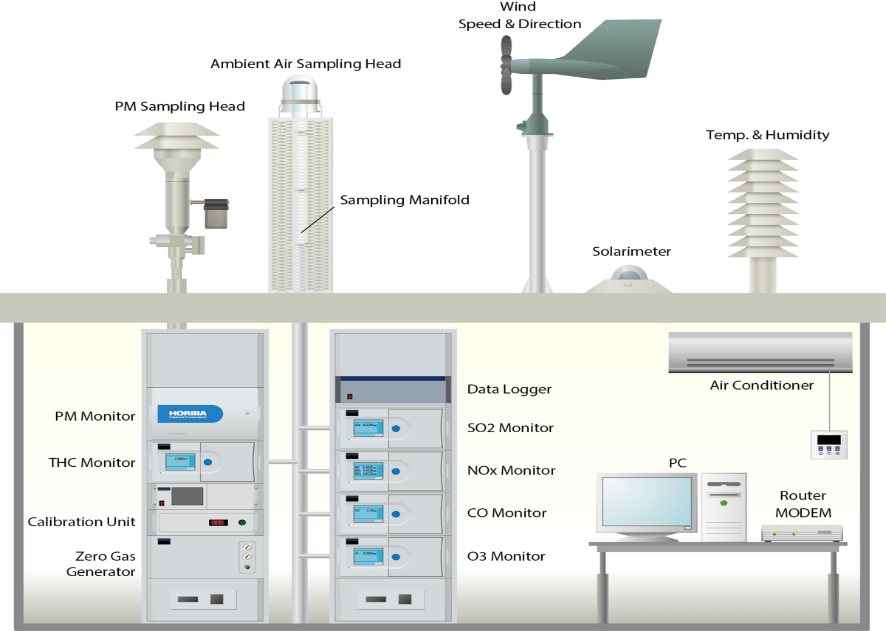



Air Pollution Analyzers
Ambient NOx/NO/NO2 analyser – Horiba APNA 370

The APNA-370 continuously monitors atmospheric NO, NO2 and NOxconcentrations using a cross-flow modulated semi decompression chemiluminescence method. The APNA-370 employs an independent, internal dry-method sampling device to achieve the highest levels of sensitivity and accuracy. The dry method, due to its minimal maintenance requirements and capability of continuous monitoring and instantaneous analysis of gas in its unaltered state, has been a preferred method for monitoring the atmospheric pollution.
——————————————————————————————————————–
Ambient CO analyser – Horiba APMA 370
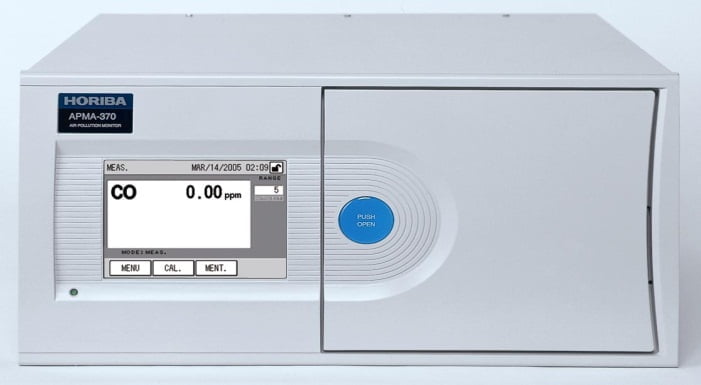
The APMA-370 is a device for continuously monitoring CO concentrations using a Non-dispersion cross modulation infrared analysis method. The APMA-370 employs an independent, internal dry-method sampling device to achieve the highest levels of sensitivity and accuracy. The dry method, due to its capability for continuously monitoring and instantaneously analyzing of gas in its unaltered state as well as its minimal maintenance requirements, has been a preferred method for monitoring the atmospheric pollution.
——————————————————————————————————————–
Ambient CO2 analyser – Horiba APCA 370

The APCA-370 is a device for continuous CO2 monitoring in ambient air. It uses cross modulation type non-dispersive infrared (NDIR) absorption method. This method employes one cell and one light source for both sample gas and reference gas what allows precise measurement without generation of zero-drift. Due to precise measurement and long term stability in continuous monitoring as well as its minimal maintenance requirements, this method has been a preferred method for monitoring the atmospheric pollution
——————————————————————————————————————–
Ambient SO2 analyser – Horiba APSA 370

The APSA-370 is a device for the continuous monitoring of atmospheric SO2 using UV fluorescence. The APSA-370 employs an proprietary, internal dry-method sampling device to achieve the highest levels of sensitivity and accuracy. The dry-method, due to its minimal maintenance requirements capability of continuous monitoring and instantaneous analysis of gas in its unaltered state, has been a preferred method for monitoring the atmospheric pollution.
——————————————————————————————————————–
Ambient H2S analyser – Horiba APSA CU-

APSA-370/CU-1 Ambient H2S monitor measures SO2 converted H2S through oxidation catalyst based on Ultra Violet Fluorescence. In order to reduce measurement error by water concentration fluctuatin in ambient, humidifier is set at sample line. It enables long-term stability according to stabilizing catalytic reaction.
——————————————————————————————————————–
Ambient THC analyser – Horiba APHA-370
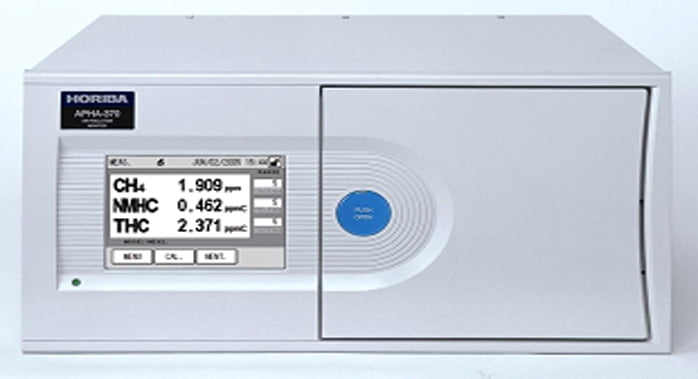
The APHA-370 continuously monitors atmospheric THC, NMHC, and CH4 concentrations using a cross-flow modulated selective combustion type method combined with a hydrogen ion detection method. The APHA-370 employs an independent, internal dry-method sampling device to achieve the highest levels of sensitivity and accuracy.
——————————————————————————————————————–
Ambient O3 analyser – Horiba APOA-370

The APOA-370 continuously monitors atmospheric ozone concentrations using a cross flow modulated ultraviolet absorption method. The APOA-370 employs an independent, internal dry-method sampling device to achieve the highest levels of sensitivity and accuracy. The dry method, due to its minimal maintenance requirements and capability of continuously monitoring and instantaneously analyzing gases in their unaltered state, has been a preferred method for monitoring the atmospheric pollution.
——————————————————————————————————————–
Ambient VOC analyser – AMA GC 5000 BTX
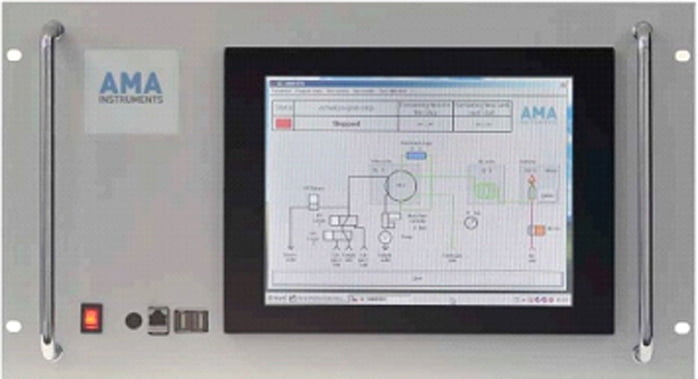
The GC 5000 BTX has been developed for the continuous monitoring of Benzene and aromatic organic compounds, such as toluene, ethylbenzene and xylenes in ambient air ; GC 5000 BTX allow for adding more organic compounds to be monitored, such as 1,3-butadiene, styrene, trimethyl benzenes and other organic species.
——————————————————————————————————————–
Ambient NH3 Analysers – Horiba APNA-CU2

APNA-370/CU-2 Ambient Ammonium Monitor measures increased nitrogen oxide (NOx) raected through oxide catalyst treatment as Ammonia (NH3) concentration with chemiluminescent (CLD) method. HORIBA’s original Cross-flow modulation method ensures long-term stability and reliable measuring value with 5ppb for min. detectable sensitivity.
——————————————————————————————————————–
Dust analyser ‒ Horiba APDA 372

The APDA-372 dust monitor is specifically designed for indoor and outdoor air quality measurements and provide continuous and simultaneous measurements of PM1, PM2.5, respirable fractions (PM4), thoracic fractions (PM10), inhalable fractions (TSP), the particle number, and (upon request) the particle size distribution in 32 size classes per decade within the particle size range of 0.18 – 18 µm. The APDA-372 uses the recognized measurement technology of optical light scattering and is equipped with a white LED light source with highly stable output and long lifetime. The system is also equipped with a filter holder for the insertion of an absolute filter (47 or 50 mm in diameter). This enables the user to perform on-site gravimetric correlation or subsequent analysis of the composition of the aerosol. The APDA-372 can be connected to an isokinetic sampling probe that measures emissions in exhaust air ducts. The volume flow is 5 L/min. The APDA-372 is additionally equipped with sensors for measuring environmental conditions, such as temperature, atmospheric pressure, and relative humidity.
——————————————————————————————————————–
Dust analyser ‒ Horiba APDA 371

Particulate matter contaminates our atmosphere in various ways. It can for instance be generated by different industrial production processes,waste combustion, coal mining or automobile exhausts. The APDA-371 automatically measures and records airborne particulate concentration levels (in milligrams or micrograms per cubic meter), using the industry-proven principle of beta ray attenuation. Each hour, a small carbon-14 element emits a constant source of high-energy electrons (known as beta rays) through a spot of clean fillter tape. These beta rays are detected and counted by a sensitive scintillation detector to determine a zero reading. The APDA-371 automatically advances this spot of tape to the sample nozzle, where a vacuum pump then pulls a measured and controlled amount of dust-loaded air through the filter tape. Hourly this dirty spot is placed back between the beta source and the detector thereby causing an attenuation of the beta ray signal which is used to determine the mass of the particulate matter on the filter tape.
The APDA-371 Air Pollution Dust Analyzer for Suspended Particulate Matter (SPM) ensures long term stability and self-diagnostic capabilities as well as efficient collection of fluorine resin tape. The measurement principle operates according to EU and EPA regulations and is also type approved by TUV.
——————————————————————————————————————–
Oline heavy metals analyser – Horiba PX 375 (15 components)
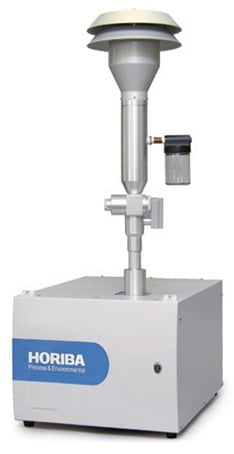
There has been a growing concern regarding particulate matter (PM) pollution and its effects on health. For effective preventative measures, the determination of source PM concentration is extremely important. Therefore, indication of PM and elemental concentrations is critical. The PX-375 analyzer employs automatic sampling, continuous on-line PM quantitative and qualitative analysis for rapid air pollution measurements.



——————————————————————————————————————–
Calibration System
Multigas Calibrator (Horiba – APMC-370)
Dilution of gases with high accuracy and precision requires high quality MFC’s, especially for high dilution ratios and ranges. Consequently HORIBA’s APMC-370 is equipped with digital MFC’s. These MFC’s are factory calibrated, optional also with a special Polynomial Calibration. HORIBA Europe‘s APMC-370 is designed to calibrate gas analyzers manually, remotely controlled or automatically. It is installed in air pollution monitoring stations for quality assurance in the laboratory and also in the production of gas analyzers. ——————————————————————————————————————–
——————————————————————————————————————–
Zero Gas Generator (ZNV-7)
HORIBA Europe’s Zero Gas Generator ZNV-7 has been developed to check the zero point and dilute the span gas sources in order to carry out the calibration of ambient air monitoring systems. The increasing sensitivity of ambient air analyzers is required by strict official guidelines, which demands pure and dry air in a sufficient quantity at constant pressure.
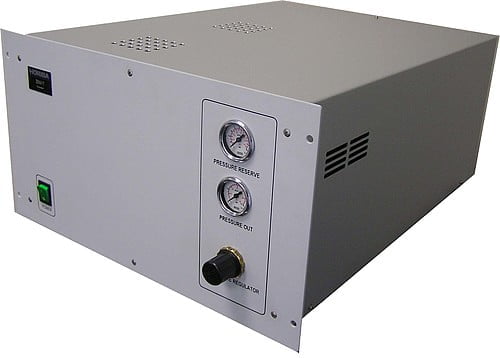
——————————————————————————————————————–
Data Management
Data Management and Reporting Software
HORIBA’s data management and reporting software (IOVIS, IDZWR) for use in Air Quality and Meteorological monitoring. The software package provides data collection, management, analysis and reporting and maintenance. Measured data and related information is stored in a high-end rational SQL database. The software can be used stand-alone or run on several machines in a network operating in Microsoft Windows environment. Communication between Central & Remote Stations works with a wide variety of communication links, such as direct connections, short haul modems, telephone (including cellular) and multi-drop. Data can be transferred to and presented in Internet pages according to customers requirements.
- Collect data from Ambient Air Monitoring Stations
- Manage and store collected data
- Provide reports based on stored data
Datalogger IO-Expander
The I/O Expander takes as a central component of the Immission measuring station the calculation of averages, controlling function controls and saving data. The raw data are analogue, serial or read in via Ethernet. Automatically when certain events occur, a message by SMS or e-mail will be sent. The transmission of measurement data in the control centre is via a modem or network. For configuration and visualization software IOVIS Lite is included. Furthermore, the stored values can request with the integrated Web interface from any browser.
